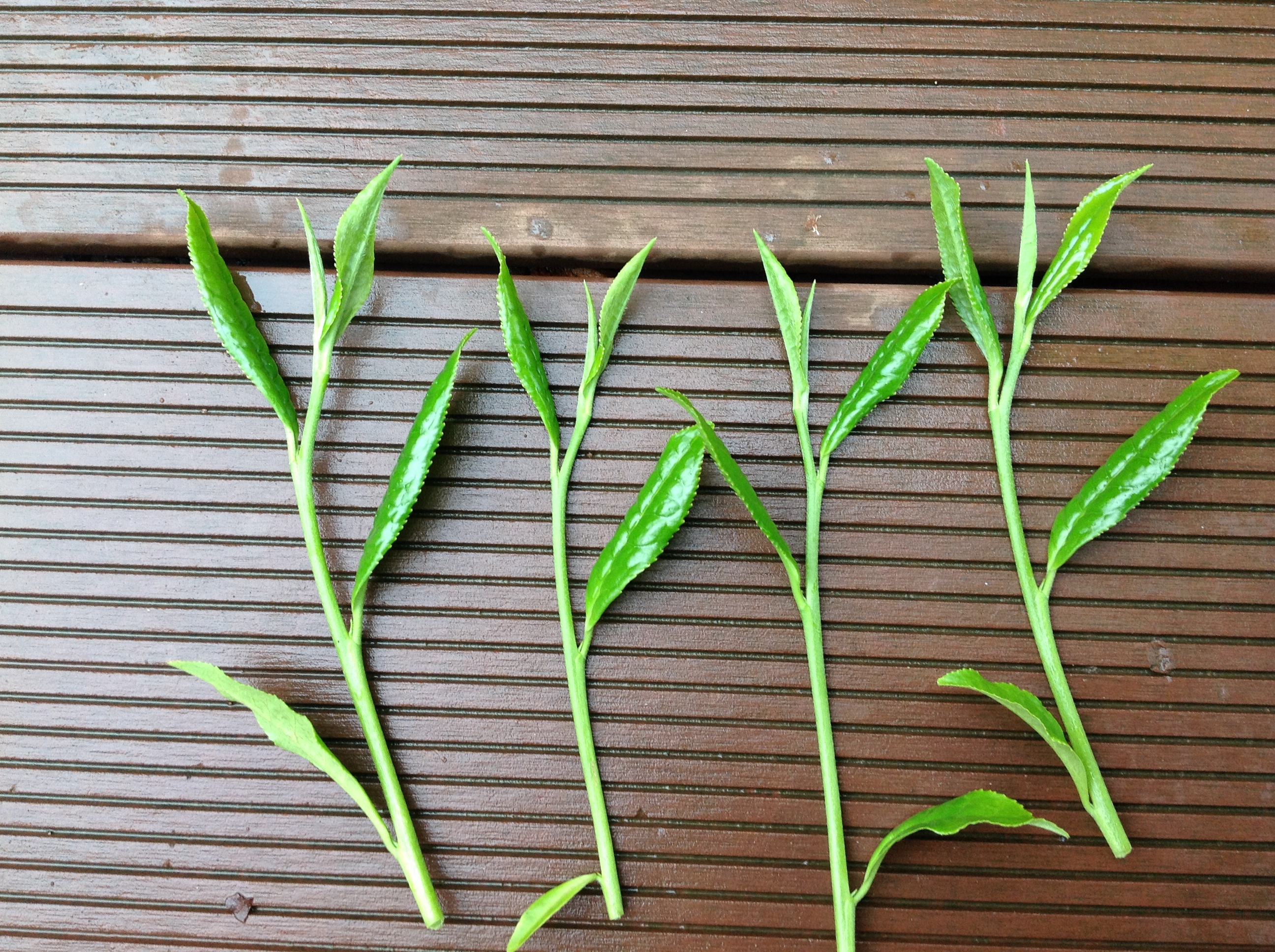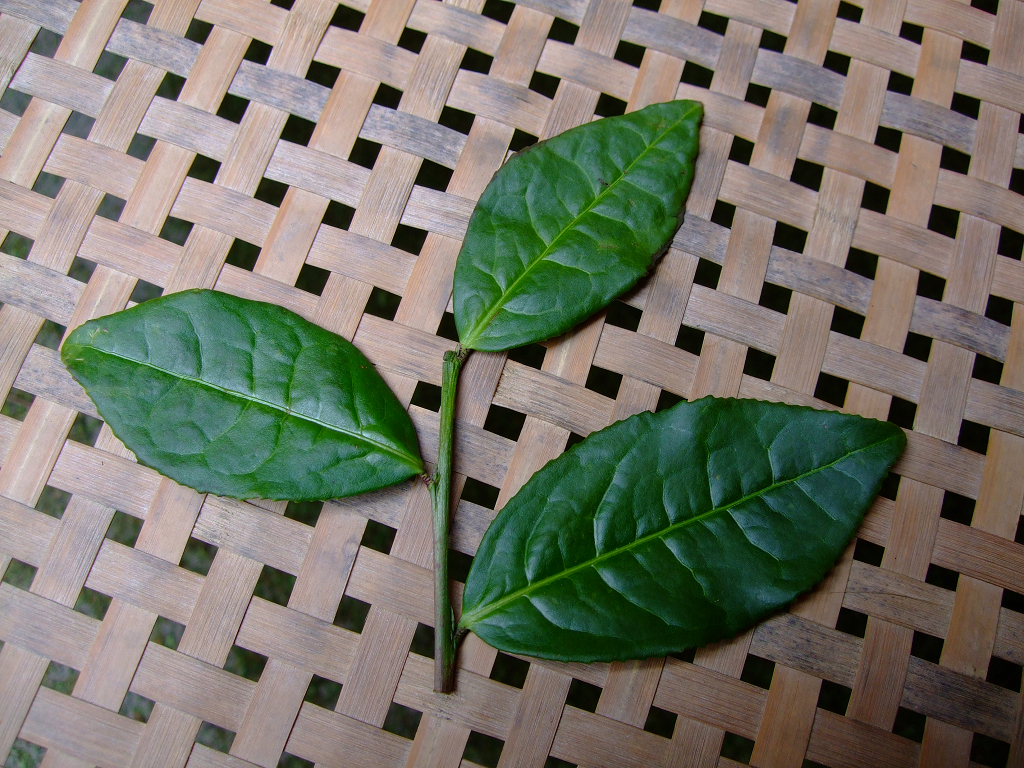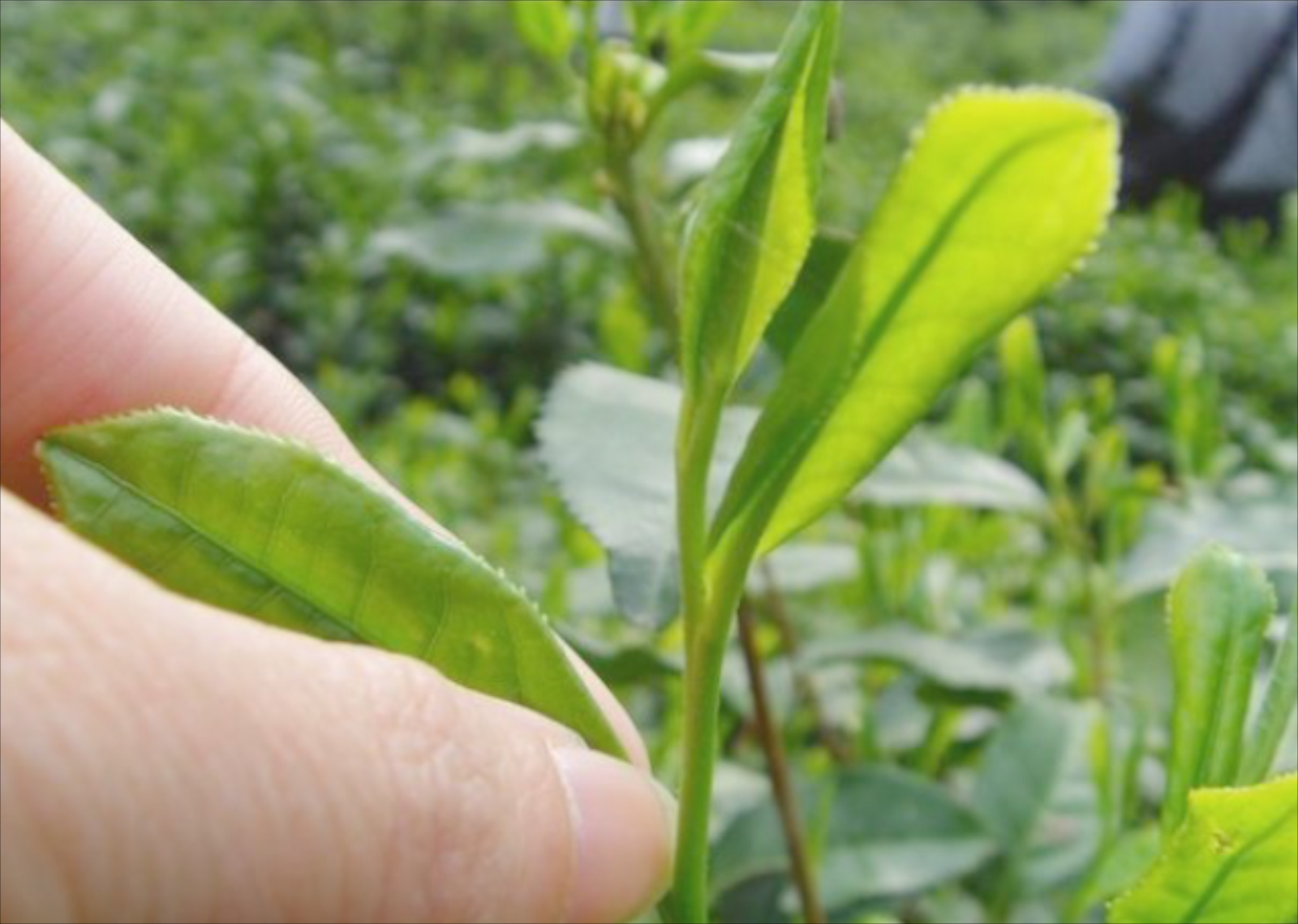What tea professionals need to start the week of Dec. 8, 2014 —
A Call for Standards
By Austin Hodge
The last decade has seen a boom in what the industry calls ‘Specialty Tea’, but if you ask for a definition you will come away confused.
What is so special about ‘Specialty Tea’?
Not much. A close examination reveals commodity tea that has been adulterated in some way, typically by blending ingredients such as pieces of fruit, exotic herbs or flower petals. Since the ingredients are dried, tea blenders spray (yes, spray) on lots of flavor. I’m using the word “commodity” to include any large-scale tea where the production goal is quantity over quality. There are great quantities of traditional tea growing in every tea producing country. These include green tea, puer tea, wulong tea, white tea well as black tea. There are also an endless variety of herbals incorrectly labeled teas.
Why set standards for ‘Specialty Tea’?
Without standards, the market faces chaos. Where would France be if it had not established standards for wine almost 500 years ago? Italy followed suit and prospered. Stop and think, would the debate over which is better — Italian or French wine — have turned out differently if the Italians had been the first to set standards?

It’s important to understand that standards not only define products, they establish markets, and whoever defines a market, controls it. It is undebatable that the French have created admirable markets for their wine, as have, more recently, specialty coffee retailers.
The chaos in the ‘specialty’ tea market comes from the fact that no one, from buyer to seller, actually knows the value of the tea they are buying or selling, or how to clearly establish its value. Price is derived mostly from marketing — price is certainly not based on the quality of the tea. In a practical sense, words like “quality”, “value”, and, “excellence” have been watered-down into obscurity as much as “specialty.”
Nowadays, tea is whatever the merchant says it is, opening a lot of ground for dubious interpretation. In contrast, standards are consistent and independently verified. The specialty coffee industry has done an excellent job of establishing standards, which has lead to levels of excellence and increased profitability enjoyed by the entire coffee industry.
? ? ?
Coffee and tea both began as rarities for the rich, evolved into commodities for the masses and are gradually becoming artisanal offerings – the choice of connoisseurs.
Everyone my age remembers that back in the day, coffee was either the Red Can (Folger’s) or the Blue Can (Maxwell House). There were neighborhood diners and corner cafes where a cup of coffee cost a quarter. This was coffee’s “First Wave.” Americans annually drank an average of 10 lbs. of coffee per person. Per capita consumption was measured by the gallon because the efficiencies of the commodity model made it cheap.
The turning point was 1974 when independent coffee shop owners established a standard for “Specialty Coffee.” The adoption of standards launched the “Second Wave.” Pioneers such as Alfred Peet at Peet’s Coffee & Tea, Starbucks, and Coffee Bean & Tea Leaf would not exist without these standards. Innovations in growing, sourcing, roasting, packaging, and coffee brewing followed.
The market for specialty coffee was more sophisticated, resembling its European counterparts. Coffee of this quality command a higher price; it no longer had to be cheap. Thus “quality” coffee became easily distinguishable from commodity coffee.
The term “Third Wave” was coined around 2002 when small coffee businessmen traveled to coffee farms to source direct and eventually became experts in every aspect from growing to roasting to brewing. This took the small retail coffee businesses to a new profitable level that could differentiate itself from the like of Starbucks and company. Once in control of the entire supply chain, not only did standards raise retail margins for retailers, the discovery of great coffee also opened the door for a respectable wholesale business selling to other quality businesses whose business models did not include working the complete supply chain.
The “Third Wave” aspires to an even higher level of coffee experience. It begins with direct sourcing. Only direct sourcing can insure quality and answer questions about fair trade and farming methodology with confidence. Third wave coffee also places high value on production and preparation: the goal is to get the best possible cup. Third wave coffee owes its existence to Starbucks for building the market for better coffee, and for establishing the benchmark. Retailers exceeding that level could not profit in the market that Starbucks created. Third Wave roasters realized they needed to get a whole lot better to beat Starbucks, and to do so they needed expertise and transparency along the entire supply chain.
Similarly, two years ago Starbucks changed the tea market dramatically for small independent tea businesses when they bought Teavana. From here on, every small tea business is going to be defined in relation to the nearest Teavana, like it or not.

The difference between coffee and tea is that there are no standards that give tea business the tools to beat Teavana. Starbucks redefined the market for coffee on almost every level. They will do the same for tea. Small tea businesses and major tea corporations alike are going to feel the heat. Without standards, Teavana, with its extraordinary marketing muscle, can define tea quality any way they want.
If standards for specialty tea mirrored the standards for specialty coffee the only tea that could quality as “specialty” is tea judged to be within the top 20%. Most of the tea sold as specialty tea in the West would be disqualified. Just as there is with coffee, few multimillion dollar companies are going to support standards for quality in the tea industry.
Why would they?
Tea’s “Third Wave”
In the spring of 2014, Jesse Jacobs of Samovar Tea, wearing a cream-colored canvas apron over a fashionable t-shirt, announced the coming of the tea industry’s Third Wave.
But can the tea industry really be on the verge of entering into a movement equivalent to that of the coffee industry? Even though both tea and coffee have the Starbucks Corporation in common, it is going to take the tea industry a very long time to catch up to the sophistication of the coffee industry. The discussion about standards for ‘Specialty Tea’ has not even begun.

Looking forward, a profitable market for small tea businesses will require standards. These need to be objective, understandable, and replicable. Standards provide growers with a definable goal for crops and harvesting. Standards enable tea makers to formulate products clearly identified by buyers, which give the producers incentive to get better. Direct sourcing will become increasingly important for the tea businessman. Consumers will actually know what they are paying for and where it originated.
Establishing standards brought extraordinary advantages to coffee growers including unimaginable financial success. A small Brazilian coffee grower this month won the Alliance for Coffee Excellence’s 100th Cup of Excellence (COE) competition to earn $50.20 per pound at auction, the highest price ever paid per pound for COE coffee. He took home $106,000 in a country where the per capita income is less than $1000 per month. What is noteworthy is that Brazil is the largest commodity coffee producer in the world. Think what standards for quality would mean for small holders in India and Africa, areas still economically strangled by the colonial commodity system. Establishing an objectively evaluated standard establishes value that can be communicated thru the supply chain to the customer. Excellence is the reward.
China is realizing the benefits of standards in its domestic market for tea right now. Their tea industry was destroyed through a 150 years of war and internal strife. As China recovered following World War II and the Mao era, tea was mediocre at best across the country. More than a decade ago China set standards for quality and freed tea makers to create and profit from their own business. Since then, China has experienced a renaissance in tea making: tea being produced for the domestic market is the best it has ever been in history; China has become the largest tea producing country in the world, gets the highest prices for its tea, and has the highest average price for tea. China has the best teas in the broadest categories; it has defined standards, and grows the largest percentage of tea using traditional, chemical free growing practices.
The coming of standards is inevitable. Small businesses that are dedicated to quality in real terms, not just in the marketing of their products, will benefit.
It took years for standards to impact coffee, but things will move quicker with tea due to the benefits of the information age. The tea industry is ready for professionals to lay the groundwork for “Third Wave” tea. Let’s leave it to Teavana to push the second wave along in building the market, like their parent company did.
What is great about getting the ball rolling towards standards for quality and, eventually — excellence — is that small businesses that are struggling to establish new business models need not worry, for the best practices for quality in the tea industry go beyond the reach of corporations, economies of scale, and deep pockets of marketing departments. Standards are the essential tool for the tea entrepreneur.
So become a pro, take some Chinese classes, and get you passport up to date, and by all means study the Specialty Coffee Industry. They have become experts in coffee on every level. You might want to remember that this year Peet’s hired a woman that is fluent in Chinese and has a masters degree in tea from Zhejiang University.
Standards, direct sourcing, transparency, expert level knowledge about tea and its culture, logistical mastery, inventory management expertise, and tea preparation skills are all requirements for ushering in tea’s third wave. Herein lays opportunity, challenge, and the promise of excellence. Let’s hope tea entrepreneurs’ passion for tea is strong enough to take them where they’ll have to go.
Austin Hodge is the founder of Seven Cups Fine Chinese Tea in Tucson, Ariz. www.sevencups.com
Copyright Austin Hodge.
? ? ?
Tea Biz serves a core audience of beverage professionals in the belief that insightful journalism informs business decision-making. Tea Biz reports what matters along the entire supply chain, emphasizing trustworthy sources and sound market research while discarding fluff and ignoring puffery.
Tea Biz posts are available to use in your company newsletter or website. License reprint and distribution rights for single articles or commission original content. Click here for details.


2 responses to “A Call for Standards – Need to Know”
Thanks for sharing, Austin.
Reblogged this on The Catch Point and commented:
Good thoughts for the future of our industry.